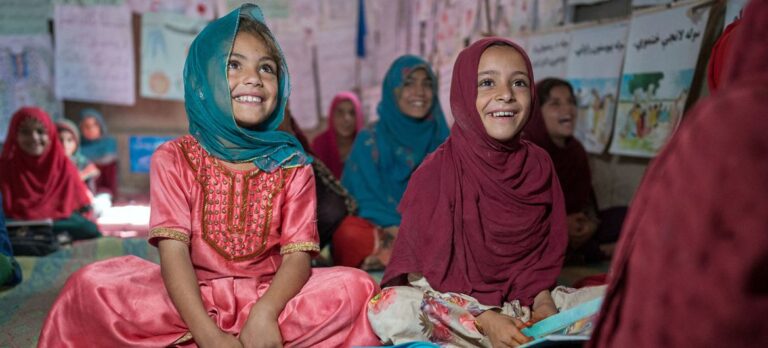
Often, when people discuss movies, one can hear appreciations for the writer, the actors, the musicians, and the directors. However, what we all tend to forget are the backstage heroes who make each scene feel larger than life, the production designers.
The production designers are in charge of the visual concept and overall aesthetic of a film, television show, or other production. They work to bring the script to life visually, overseeing all aspects of set design, locations, props, and even graphics. Moreover, they ensure that the visual aspects of a production effectively convey the story and setting. Every frame you love is the result of meticulous attention to details, colors, and imagination.
Truly, production designers are the unsung poets of cinema who don’t write with words but with walls, floors, windows, and skies. Essentially, they create the visual world in which the story unfolds.
Yet, why don’t we give them the recognition they deserve? Why are they often left in the shadows?
In this article, we will walk you through five famous set designers who brought life to the worlds in some of our favourite films. So, let’s dive in!
Sabu Cyril

When it comes to production designs and directors, the name that most Indians agree with has to be Sabu Cyril. For instance, he designed the fictional kingdom of Mahishmati in Baahubali: The Beginning, the futuristic city elements and labs in Krrish 3, and the grand stage setups during the Filmfare scenes and song sequences in Om Shanti Om.
His family background shaped his artistic inclination. As a result, from a young age, Sabu demonstrated a keen interest in understanding how things work and their practical applications in everyday life. This curiosity, in turn, led him to where he is today.
Over the years, his work has spanned epic films, period dramas, and even sci-fi fantasies. In particular, his signature style lies in massive yet believable sets that fuse art with technology. Furthermore, he seamlessly blends practical sets with VFX, immersing the audience fully into the story.
With decades of experience in the industry, Sabu Cyril has earned immense recognition. He has won four National Film Awards along with numerous Filmfare and IIFA Awards. Additionally, he has worked in Tamil, Telugu, Malayalam, and Kannada films.

Sarah Greenwood

The British production designer, Sarah Greenwood is popularly known for her larger-than-life work in Disney’s live-action version of Beauty and the Beast, Pride & Prejudice, and Barbie. She’s celebrated for crafting immersive, character-driven worlds that captivate audiences.
Wimbledon College of Art trained Sarah in theatre design. Shortly after, she began her career in UK theatre before transitioning to the BBC in the early 90s. This shift helped her move from theatre to television. However, by the late 90s, she ventured into independent cinema.
In the iconic Pride & Prejudice, she created authentic 18th-century interiors by building new rooms within historic structures. Moreover, she crafted the vibrant and stylized Barbie Land using only 12 shades of pink. In addition, Sarah Greenwood adapts seamlessly between location-based builds and studio designs, enhancing both the narrative and emotional tone. She also blends playful creativity with historical research.
In 2008, she was elected Best Production Designer for Atonement at the 61st British Academy Film Awards and the 26th European Film Awards, and she won the Art Directors Guild Award for Excellence in Period Film for the same project. Furthermore, she has been nominated seven times for the Oscars.

M. K. Syed
M. K. Syed is the Art Director (production design), credited among the art direction team responsible for one of the Indian cinema’s most memorable visual masterpieces – Mughal-E-Azam.

Alongside set decorator and director K. Asif’s vision, Syed helped craft the grand and extraordinary Mughal-era world. It included the courtrooms, majestic palaces, and the iconic Sheesh Mahal (Palace of Mirrors). Notably, the Sheesh Mahal, with its intricate mirror work and Belgian glass, was built with careful attention to detail and took years to construct. As a result, it set a new benchmark in Indian film production design.
Moreover, art director M. K. Syed led the production design of the film. The design was extravagant, and some sets took six weeks to create, generating the feel of a Hollywood historical epic of the period.
Stuart Craig

Norman Stuart Craig is a British production designer and the visionary behind the magical world of Harry Potter. He designed the wizarding world sets and worked closely with his frequent collaborator and set decorator, the late Stephenie McMillan.
Additionally, he was responsible for designing the Wizarding World of Harry Potter theme parks at the request of author J. K. Rowling.
In a December 2007 interview on the Potter podcast PotterCast, Rowling expressed her trust in Stuart :
“The key thing for me was that, if there was to be a theme park, that Stuart Craig … would be involved. … More than involved, that he would pretty much design it. Because I love the look of the films; they really mirror what’s been in my imagination for all these years” – J. K. Rowling
Stuart blends practical craftsmanship with VFX, evolving from miniature models to digital extensions. Moreover, he carefully layers authenticity with fantasy and believes that magic becomes stronger when it grows out of something real.

He has won a total of 11 Academy Award nominations and 3 wins, including Harry Potter and the Goblet of Fire. In addition to that, the Art Directors Guild has honoured him with a Lifetime Achievement Award at the awards ceremony in 2008.
Subrata Chakraborty

Subrata Chakraborty is one of Bollywood’s most respected production designers today, bringing grandeur and authenticity to every frame. His name is attached to many high-profile projects, including Haider, Padmaavat, Gangubai Kathiawadi, and Heeramandi.
In addition to his background in fine art, he holds a deep emotional investment in the craft. Working in close partnership with fellow production designer Amit Ray, he balances historical accuracy with cinematic experience in a strategic way. As a result, his sets are both breathtaking and believable.
Despite growing up in a small Mumbai slum, he quickly gained recognition for his work. Subrata has won numerous awards, including Filmfare and IIFA Best Production Design (with Amit Ray) for Haider. For Heeramandi, he and Amit Ray built over 60 sets after conducting 7–8 months of research. Moreover, he has also served on the Oscar Jury specifically for Production Design.

It’s Time to Celebrate Production Designers as Storytellers
Production designers are the storytellers who shape the emotional and physical world of every frame we admire. While actors perform and directors guide, it’s the production designers who quietly blend creativity, research, and imagination to bring scripts to life.
So, the next time a movie scene leaves you in awe, take a moment to acknowledge the production designer behind it. Because without them, stories would lose their depth, mood, and magic.
Hence, It’s time we move them out of the shadows and into the spotlight they truly deserve.
For more such insightful stories, stay tuned with The World Times.



